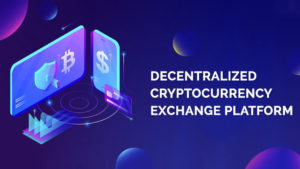In the ever-evolving landscape of digital finance, cryptocurrencies have emerged as a transformative force, revolutionizing how we perceive and interact with traditional financial systems. At its core lies the cryptocurrency exchange, which facilitates the buying, selling, and trading of digital assets.
As the popularity of cryptocurrencies continues to rise, more and more entrepreneurs are now considering cryptocurrency exchange development. However, the idea of setting up cryptocurrency exchange software can seem daunting, especially for those new to the space.
If you are looking to develop a crypto exchange then hire our crypto exchange developer. Call/Whatsapp: +91 7014607737
In this blog, we’ll walk you through the essential steps and considerations involved in setting up your cryptocurrency exchange software.
So, let’s get started!
An Overview of Cryptocurrency Exchange Software
Cryptocurrency exchange software serves as the backbone of digital asset trading platforms, facilitating the buying, selling, and exchange of cryptocurrencies. These platforms enable users to trade a wide range of digital assets against fiat currencies or other cryptocurrencies.
These play a crucial role in the growth and development of the digital asset ecosystem, providing traders and investors with essential tools to participate in the dynamic world of crypto trading.
Steps to Build a Cryptocurrency Exchange Software
Here are the essential steps that can help you build crypto exchange software quickly:
-
Market Research & Planning
Before you get started, it is important to understand the target audience and their needs. Analyze competitors and identify unique selling points (USPs) for your exchange. Also, define the features and functionalities your crypto exchange will offer.
-
Legal Compliance
Next, you need to research and comply with regulations in the regions where you plan to operate. For that, you may have to obtain the necessary licenses and registrations. Consider implementing KYC and AML procedures.
-
Technology Stack Selection
The next important step is to choose a suitable technology stack for your exchange’s backend, frontend, and database. To make a wise decision, you have to consider scalability, security, and ease of maintenance.
-
Architecture Design
Following the selection of the technological stack, design the architecture of your exchange software, including the user interface, trading engine, wallet integration, and API.
-
Development
Next, you need to develop the front end of the crypto exchange for user registration, account management, and a trading interface. Also, develop the back end for order matching, transaction processing, and wallet management. At this step, you need to integrate third-party APIs for liquidity, market data, and payment processing.
-
Security Implementation
Implement robust security measures to protect user accounts, transactions, and funds. You can use encryption, two-factor authentication (2FA), and other security best practices. Also, conduct regular security audits and penetration testing.
-
Payment Integration
Integrate payment gateways for fiat currency deposits and withdrawals. You can implement cryptocurrency wallets for deposit, withdrawal, and storage.
-
Testing
Conduct extensive testing to ensure the exchange functions as expected. Test for performance, security vulnerabilities, and usability.
-
Deployment & Launch
Deploy the exchange software on a secure server or cloud infrastructure. Once deployment is completed, launch the exchange to the public after thorough testing and legal compliance.
Key Features of Crypto Exchange Software
Here are some key features that you need to consider while developing cryptocurrency exchange software:
-
Security Measures
Security is important in crypto exchanges due to the nature of digital assets. Features like SSL encryption, two-factor authentication (2FA), biometric authentication, cold storage for funds, and regular security audits are essential to safeguarding user funds and data.
-
User Authentication & Verification
Robust user authentication mechanisms, including Know Your Customer (KYC) and Anti-Money Laundering (AML) procedures, ensure compliance with regulatory requirements and help prevent fraudulent activities within the software.
-
Trading Engine
A powerful trading engine that supports various order types (market, limit, stop-loss, etc.) and executes trades efficiently is crucial. It should also handle high trading volumes without downtime or delays.
-
Liquidity
Liquidity is essential for a smooth trading experience. Integration with liquidity providers, market makers, and order books helps maintain adequate liquidity across trading pairs.
-
Wallet Integration
Integration with secure wallets allows users to deposit, withdraw, and store their digital assets. Multi-signature wallets and hot/cold wallet systems enhance security.
-
UI & UX
An intuitive and user-friendly interface makes it easy for traders to navigate the platform, place orders, view charts, and track their portfolios. Customization options and support for multiple languages enhance usability.
-
Transaction Fee Management
Flexible fee structures and fee management tools should be integrated within the cryptocurrency exchange since they allow the exchange to generate revenue while remaining competitive in the market.
-
Admin Dashboard
A comprehensive admin dashboard gives exchange operators control over user accounts, trading pairs, fees, security settings, and other aspects of the platform.
Cost to Build Crypto Exchange Software
The cost of crypto exchange software development varies depending on a range of factors, such as the scope of features, complexity of the integrated functionalities, chosen technological stack, and geographic location of the development team.
Keep in mind that the more complex software you decide on, the more developers, time, and resources it will take to get into the market.
If you choose to go for a basic cryptocurrency exchange platform, it may cost $10K to $100K to develop, while a more complex and feature-rich platform can cost over a million dollars.
If you wish to get more accurate estimates, it is important to evaluate your project goals and needs and consult with professionals specializing in crypto exchange software development services. Since its process involves a lot of platform complexities, you can still get a clear picture of its development and estimate expenses:
-
Basic: $50K to $100K
-
Medium: $125K to $225K
-
High: $250K+
Wrapping Up
Undoubtedly, venturing into the space of cryptocurrency exchange software can be rewarding in the end. By following the steps outlined in this blog, you can seamlessly set up your exchange platform.
As you get ahead, it’s crucial to partner with a reliable cryptocurrency exchange software development company like Coin Developer India.
With their expertise, experience, and commitment to excellence, they are known for offering tailored solutions that meet your specific needs. Their team of seasoned professionals can deliver high-quality, secure, and scalable solutions that align with the latest industry standards.
So, get in touch with them today!
Call/Whatsapp: +91 7014607737 | Mail ID: [email protected]








